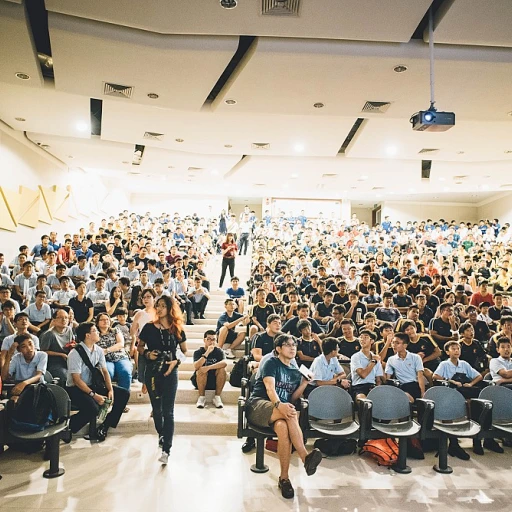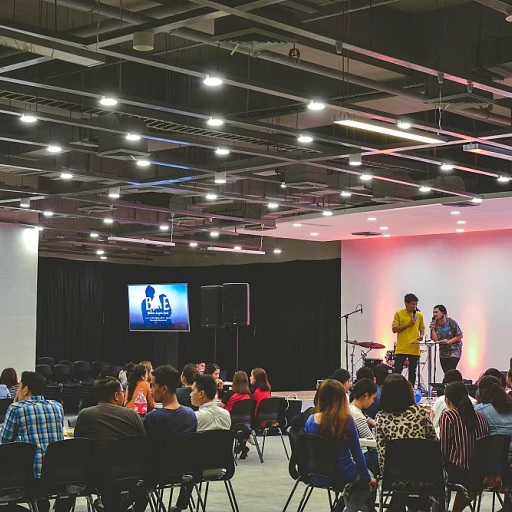
Understanding the Importance of Staff Recognition
Recognizing the Heartbeat of the Organization
In every thriving organization, understanding the importance of recognition cannot be overstated. It is more than a simple gesture; it creates an environment where employees feel valued and appreciated. When a company makes a concerted effort to recognize employees' hard work, it fosters a sense of belonging and increases overall employee engagement.
A strong culture of appreciation plays a pivotal role in employee motivation. It becomes the backbone of a positive work environment where team members feel encouraged to bring their best selves every day. Employee recognition is not just about celebrating achievements but also about aligning with company values, thereby strengthening organizational culture.
Recognition programs offer diverse opportunities to express appreciation effectively. Through an array of recognition ideas, employees are not only acknowledged for their contributions but also celebrated in ways that resonate with them personally. This personalized approach ensures that team members not only appreciate the acknowledgment but also feel truly recognized in their individual capacity.
The 'how' of recognition is equally essential. Effective recognition incorporates elements that cater to both peer recognition and formal recognition. By integrating peer recognition, we provide a platform for employees to appreciate each other, making appreciation a part of daily work life. This inclusiveness can transform the recognition into a program that is not only fun but also meaningful for every participant, reinforcing the concept of team spirit and camaraderie.
Creative Recognition Ideas for Staff
Refreshing Recognition Practices
One of the most effective ways to enhance company culture and employee engagement is by developing creative recognition practices that rejuvenate the traditional appreciation methods. When employees feel truly valued, their motivation and commitment towards the organization naturally increase. To foster this environment of appreciation and motivate your workforce, consider some unique approaches:- Peer Recognition Programs: Encourage team members to acknowledge each other’s achievements. Implementing a system where peers can express appreciation and share shout outs can enhance camaraderie and team spirit.
- Spotlight Achievements: Regularly celebrate milestones and hard work in team meetings. Recognize employees who go above and beyond by featuring them in newsletters or on social media to underscore their contributions.
- Customized Celebrations: Organize an Appreciation Day where employees can enjoy fun activities aligned with company values, rewarding their dedication with tangible benefits or experiences that resonate with them.
- Personalized Rewards: Offer rewards like gift cards or unique experiences tailored to individual preferences. This personalization demonstrates a company’s acknowledgment of an employee’s unique tastes and desires.
- Incorporate Company Values: Align recognition efforts with your organization’s core values. Recognize behaviors and accomplishments that exemplify these values to reinforce their importance.
Tailoring Recognition to Individual Preferences
{\"result\": \"
Personalized Appreciation for Meaningful Impact
Tailoring recognition to individual preferences can significantly enhance the impact of a company’s recognition programs. Each employee has unique ways in which they feel valued and appreciated. Understanding these distinctions is key to ensuring that recognition efforts resonate genuinely and effectively.
Here are some strategies to consider when customizing recognition to meet various employee preferences:
- Know Your Team: Engage in regular conversations with team members to understand their likes, dislikes, and aspirations. This can be done through casual interactions or structured feedback sessions.
- Customize Rewards: One-size-fits-all rewards might not appeal to everyone. While some employees may appreciate public appreciation like shout outs on social media, others may prefer private acknowledgment, such as personal notes or quiet conversations.
- Diverse Recognition Ideas: Integrate a variety of recognition ideas in your employee engagement strategy. Some employees enjoy receiving tangible rewards like gift cards, while others value opportunities for professional development, such as attending seminars or workshops.
- Incorporate Peer Recognition: Creating opportunities for peer recognition can foster a stronger and more inclusive company culture. Encourage team members to celebrate each other's achievements, which not only boosts morale but also strengthens team dynamics.
- Embrace Company Values: Align recognition efforts with the company’s core values. When employees see that their hard work is acknowledged in ways that reflect the organization's principles, they’re more likely to feel a deeper connection with their work and the company.
Personalizing recognition not only helps employees feel appreciated but it aligns with promoting a culture of appreciation. This targeted approach ensures that every recognition effort is not just a tick-box exercise but a meaningful gesture that truly resonates with employees.
For more insights on strategic approaches within HR leadership, consider exploring further details from leading HR events.
\
}
Leveraging Technology for Employee Recognition
Utilizing Modern Tools to Amplify Recognition
In today’s digital era, leveraging technology can significantly enhance how employee recognition is managed within an organization. Digital platforms provide a seamless way to implement recognition programs and make recognizing peers a regular part of the company culture. Online platforms allow for consistent communication and real-time recognition, ensuring that employees feel valued promptly for their hard work. Utilizing tools such as intranet systems, employee comment boards, and specialized employee recognition software can help organizations maintain an ongoing appreciation day, every day. Social media further amplifies recognition programs by making achievements more visible across teams, departments, or even company-wide. Creating a dedicated space for "shout outs" on internal or public social networks can encourage peer recognition. This also supports the cultivation of a positive work culture where employees feel appreciated and part of a cohesive team. Technology can also facilitate creative recognition ideas. Gift cards delivered electronically or e-vouchers that employees can redeem for rewards can be seamlessly integrated into an organization's recognition program. Such incentives can add a layer of fun and excitement to the appreciation process. Moreover, personalization remains crucial when recognizing employees. Technology can gather and analyze data on employee preferences, helping tailor rewards to individual desires, ensuring they feel recognized in a way that's meaningful to them. Incorporating innovative tech solutions not only streamlines how recognition is managed but also reinforces the core company values, further enhancing employee engagement and fostering a more connected work environment.Measuring the Impact of Recognition Programs
Assessing the Effectiveness of Recognition Initiatives
Tracking the success of an employee recognition program is crucial for ensuring it meets the objectives of fostering engagement and promoting a positive company culture. By measuring the impact, you can better understand how recognition initiatives inspire motivation and appreciation among employees.- Employee Feedback: Gathering direct feedback from employees is one of the most insightful methods for gauging the effectiveness of recognition programs. Surveys, focus groups, and one-on-one interviews allow team members to express their feelings about how appreciated they feel. Positive responses can indicate successful initiatives, while areas for improvement can be identified through constructive feedback.
- Engagement Metrics: Measuring metrics such as employee engagement scores and retention rates can offer valuable insights into how recognition affects work culture. Recognized employees often demonstrate higher satisfaction levels and are less likely to leave the organization, reflecting successful appreciation and reward strategies.
- Achievement Tracking: It's essential to monitor whether recognizing employees contributes to achieving company objectives. Look at how recognition aligns with and enhances teams' overall performance and achievements, as goals accomplished can be a direct outcome of effective recognition programs.
- Frequency and Participation: Consider the frequency of recognition activities and how many employees are involved. A successful program includes numerous opportunities for both peer recognition and company-led initiatives and is accessible to all employees, ensuring broad participation.
Overcoming Challenges in Staff Recognition
Conquering the Hurdles in Staff Appreciation
Recognizing employees' efforts is integral for company culture and employee engagement, but it comes with its own set of challenges. When companies aim to express genuine appreciation and unlock the benefits of employee recognition programs, several hurdles may arise. Here’s how organizations can overcome those challenges:- Ensuring Consistency: One of the key challenges is maintaining a consistent approach to recognition across different departments. To tackle this, companies can develop company-wide guidelines that align with their values and ensure that every leader follows a standardized protocol for recognizing hard work.
- Avoiding Favoritism: Bias in recognition can make employees feel undervalued. By implementing peer recognition systems like regular team shout-outs, companies can democratize appreciation, making it accessible to all staff members.
- Cultural Variations: Organizations with a diverse workforce often face the issue of varying cultural preferences. Offering tailored recognition ideas helps in making every team member feel celebrated, aligning with their personal values and cultural expectations.
- Budget Constraints: Organizations may worry about the costs associated with recognition programs. However, low-cost options such as social media praise, fun employee appreciation days, or inexpensive rewards like gift cards can be just as effective.
- Measuring Impact: Understanding the return on investment for recognition programs can be difficult. However, regularly collecting feedback from employees and analyzing metrics such as employee retention rates can offer insights into the program's effectiveness.
- Adapting to Remote Work: With more teams working remotely, recognizing employees has its unique set of challenges. Leveraging technology, such as virtual platforms or apps, can ensure remote team members still feel appreciated and connected.










